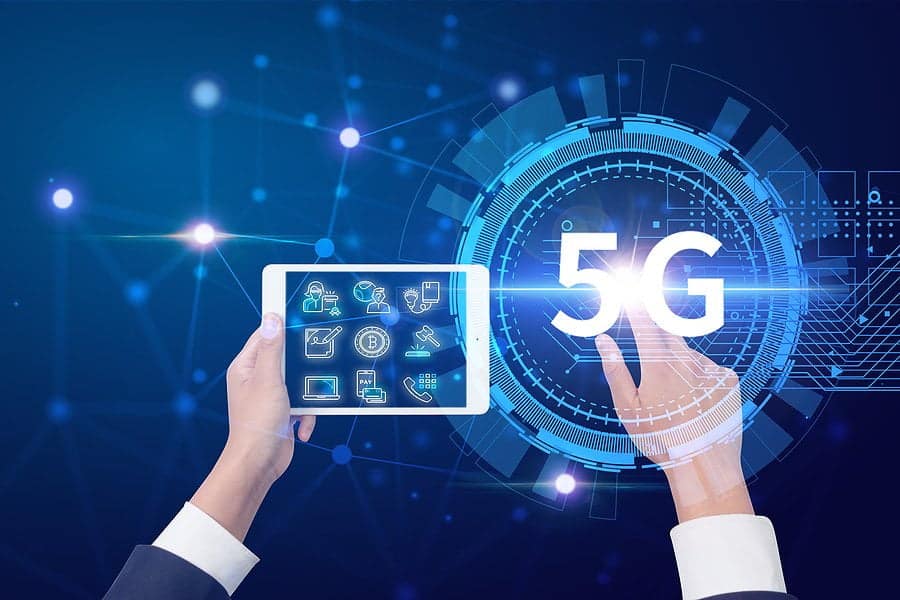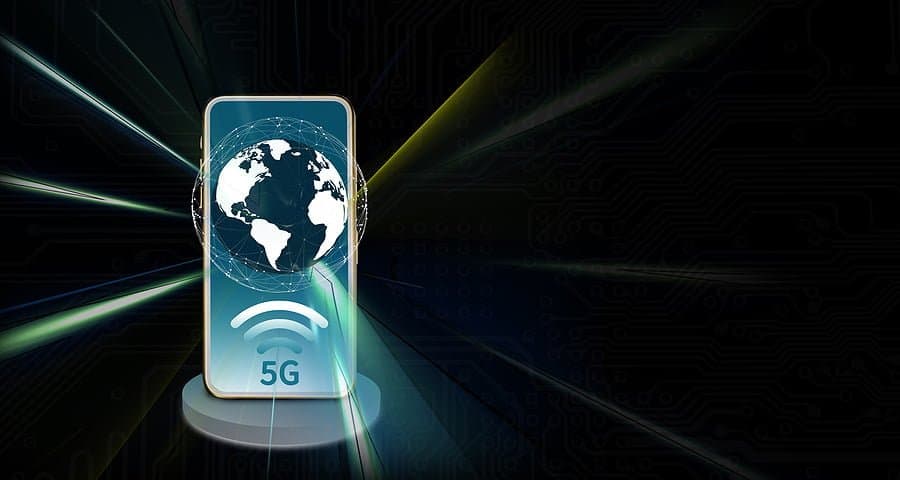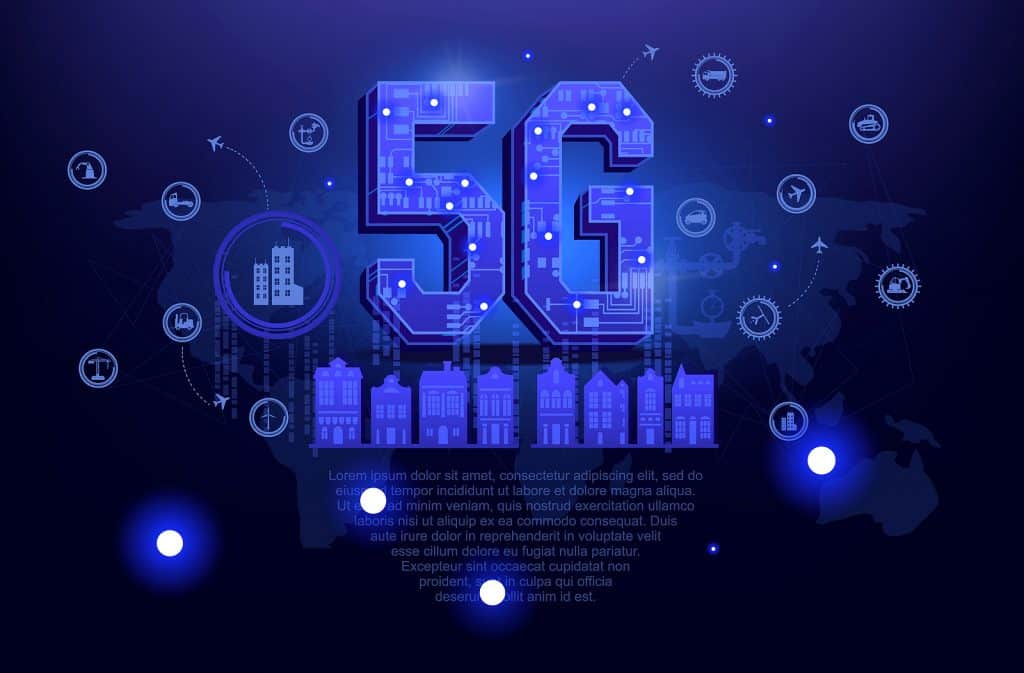There’s been a rash of lofty promises and no small amount of controversy around the ongoing rollout of the new 5G wireless technology. Without a grasp of the underlying facts and principles, it’s easy to get caught up in the hype.
Table of Contents
ToggleHow much faster is 5G? How many Mbps is 5G? What’s the difference between 4G and 5G?
In this article, we’ll be answering these and other burning questions as we compare the nature and performance of previous-generation networks to 5G (fifth generation)
The Issue of Generations
First of all, the “G” in 5G and other network classifications stands for “Generation.” Each generation of wireless broadband is classified based on a set of telephone network standards that describe the technological implementation of the system.
Under this classification system, 2G refers to the second generation of mobile networks based on GSM – the Global System for Mobile, an international standard for mobile phones. Radio signals used under the first generation or 1G network were analog, while 2G networks were digital. By allowing multiple users on a single channel via multiplexing, 2G networks enabled cellular phones to work with both data and voice.
2G Vs 5G
In debating the issue of 2G vs 5G, it’s necessary to look at the systems from two standpoints: that of wireless frequency and the performance of their broadband / cellular networks.
From a frequency perspective, 2G and 5G refer to the 2.4GHz and 5GHz (gigahertz) wireless frequencies, respectively. And the main differences between the two frequencies lie in the range (i.e., coverage) and bandwidth (i.e., speed) that the bands provide.
The 2.4GHz band provides coverage at a longer range, but can only transmit data at slower speeds. In contrast, the 5GHz band provides less coverage but transmits data at faster speeds. So 5GHz provides faster data rates at a shorter distance, while 2.4GHz offers coverage over farther distances, but may perform at slower speeds.
Higher frequencies dissipate or fade out more quickly and have more difficulty penetrating solids. For this reason, the 5GHz band has difficulty passing through solid barriers such as walls and floors.

Meanwhile, the 2.4GHz band is limited by regulatory domains to only 11 channels, only three of which do not overlap. The 5GHz band operates over 23 channels, all of which are non-overlapping. Since overlapping channels distort radio signals, devices using them often need to retransmit data packets, which slows down their performance. What’s more, when multiple devices attempt to use the same radio space, overcrowding occurs. This problem is much less severe with the 5GHz band due to its greater number of non-overlapping channels and the fact that fewer devices actually use it.
Note that 5GHz Wi-Fi is not 5G cellular, which utilizes the rarely used radio millimeter bands in the 30GHz to 300GHz range. 5GHz Wi-Fi is a short-range home networking system that operates in the 5GHz radio band. At the 2GHz level, cordless phones, microwaves, and numerous other home devices use or transmit radio frequencies inside the 2.4Ghz range.
For 2G cellular, data speeds of up to 64kbps (kilobits per second) are possible, over a bandwidth of 30 to 200KHz (Kilohertz). At the time of its launch, this allowed for better quality voice calls than were available under the first generation of mobile phones. It also enabled services such as SMS (Short Message Service) and MMS (Multimedia Message Service).
Moving Forward To 3G
The third generation or 3G standard uses the Universal Mobile Telecommunications System (UMTS) as its core network architecture, and the Wide Band Wireless Network to increase clarity. By combining aspects of the 2G network with new technologies and protocols, 3G networks deliver a significantly faster data rate. Increased bandwidth and data transfer rates enable 3G to handle larger capacities, and the network was the first to have serious broadband capabilities.
With 3G, transfer speeds of up to 2Mbps are typical, making it suitable for sending or receiving large email messages.
The 4G vs 5G or 5G vs 4G Debate
Strictly speaking, this particular comparison should really be couched as 5G vs 4G LTE, because a true 4G network has actually yet to operate.
“Fourth Generation” or 4G is a specification laid down by the International Telecommunications Union (ITU) in 2008. The performance criteria set out for this new generation were significantly higher than those for 3G – so high, in fact, that equipment manufacturers and network providers have been unable to meet them in full.
To get around this fact, and to communicate to consumers that what was now available represented a step up from the previous generation, they came up with the designation LTE, which is short for “Long-Term Evolution.” The idea is that 4G LTE represents a stage in a gradual progression to the ideal 4G standard, as set out by the ITU.
Back in 2008, the ITU standard stipulated a minimum specification for 4G of 100 Mbps. In strict adherence to the standard, your carrier network has to be able to download data at a minimum of 100Mbps, to qualify for true 4G. Some carriers have dubbed this level of performance 4G LTE-A (for Advanced).
So, in a nutshell, when someone says “4G LTE,” they are actually talking about something that’s weaker than true 4G, but better than simple 3G.

The 4G vs 5G Speed Comparison
Hypothetically, the 5G speed in Mbps is projected to be an order of magnitude up from the level laid out years ago for the true 4G standard (around 100Mbps). 100 gigabits per second (100GBps) is currently the theoretical 5G download speed. The actual position is a bit more nuanced than that.
4G LTE can currently support interactive multimedia, voice, and video, with maximum speeds of up to 20Mbps. Though the true speed of 5G is unclear, download speeds of around 1GBps have been observed, with a theoretical maximum of around 10GBps at the current state of technology. As a point of reference, 1GBps is fast enough to download a full-length HD movie in a few seconds – an operation that takes around seven minutes on 4G LTE.
Latency is another characteristic in which 5G displays a significant edge over its 4G LTE predecessor. Latency is a measure of the time it takes for information sent from a device to be usable by the receiver. Expressed in milliseconds, latency is low for 4G (typically in the tens and 20s), but 5G is set to reduce it to virtually zero, with 1 millisecond of latency required for the official standard.
Summary:
Previous Generation Networks Vs 5G
Each generation of wireless broadband is classified based on a set of telephone network standards that describe the technological implementation of the system. Under this classification system, 2G refers to the second generation of mobile networks based on GSM – the Global System for Mobile, an international standard for mobile phones. Radio signals used under the first generation or 1G network were analog, while 2G networks were digital. By allowing multiple users on a single channel via multiplexing, 2G networks enabled cellular phones to work with both data and voice. From a frequency perspective, 2G and 5G refer to the 2.4GHz and 5GHz (gigahertz) wireless frequencies, respectively. And the main differences between the two frequencies lie in the range (i.e., coverage) and bandwidth (i.e., speed) that the bands provide. Note that 5GHz Wi-Fi is not 5G cellular, which utilizes the rarely used radio millimeter bands in the 30GHz to 300GHz range. 5GHz Wi-Fi is a short- range home networking system that operates in the 5GHz radio band. The third generation or 3G standard uses the Universal Mobile Telecommunications System (UMTS) as its core network architecture, and the Wide Band Wireless Network to increase clarity. Strictly speaking, this particular comparison should really be couched as 5G vs 4G LTE, because a true 4G network has actually yet to operate. “Fourth Generation” or 4G is a specification laid down by the International Telecommunications Union (ITU) in 2008. The performance criteria set out for this new generation were significantly higher than those for 3G – so high, in fact, that equipment manufacturers and network providers have been unable to meet them in full. Latency is another characteristic in which 5G displays a significant edge over its 4G LTE predecessor. Latency is a measure of the time it takes for information sent from a device to be usable by the receiver. Expressed in milliseconds, latency is low for 4G (typically in the tens and 20s), but 5G is set to reduce it to virtually zero, with 1 millisecond of latency required for the official standard.





